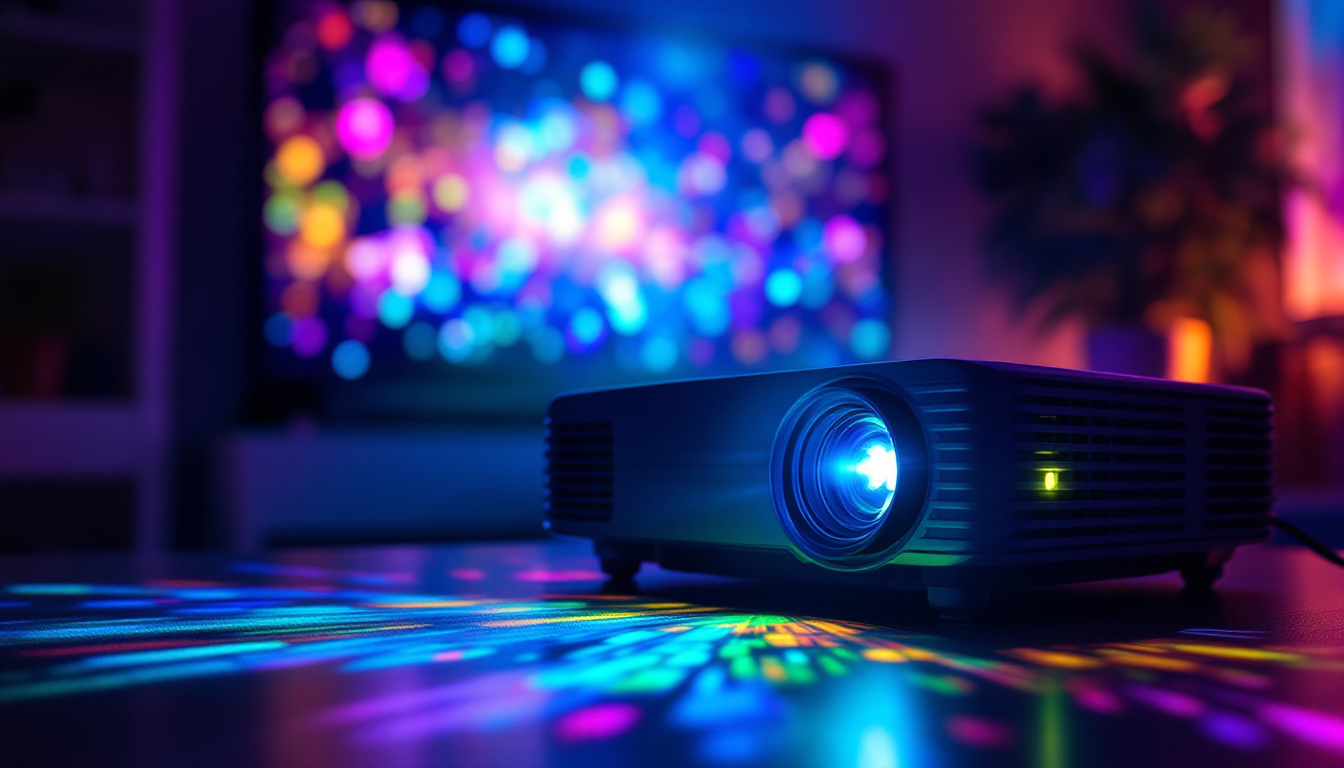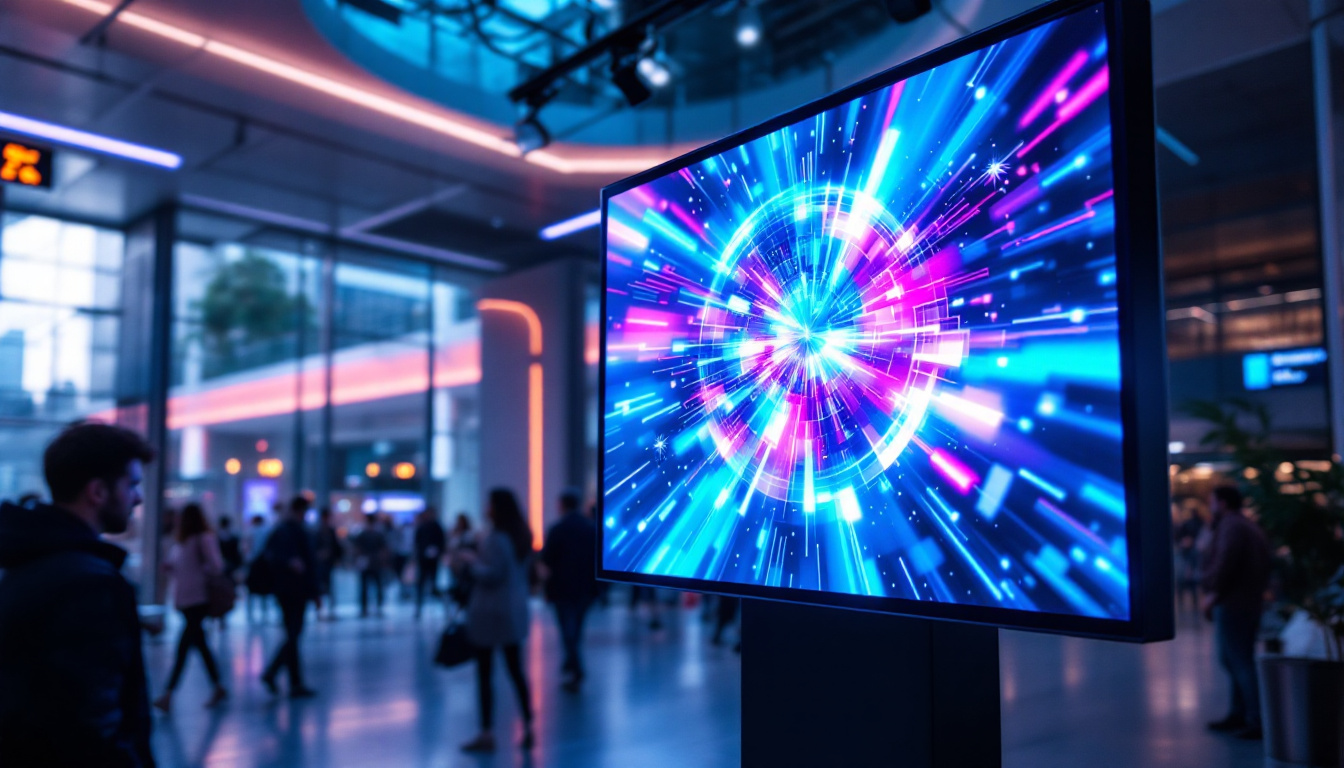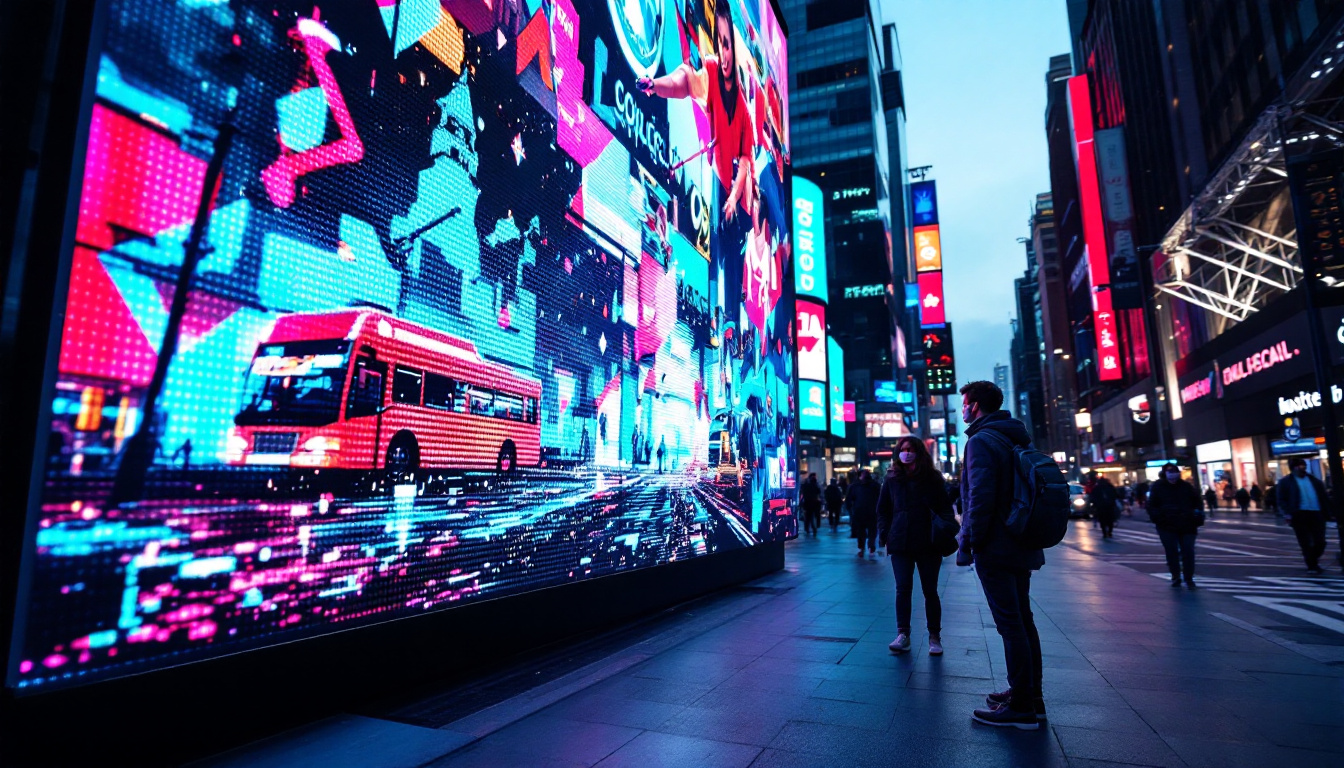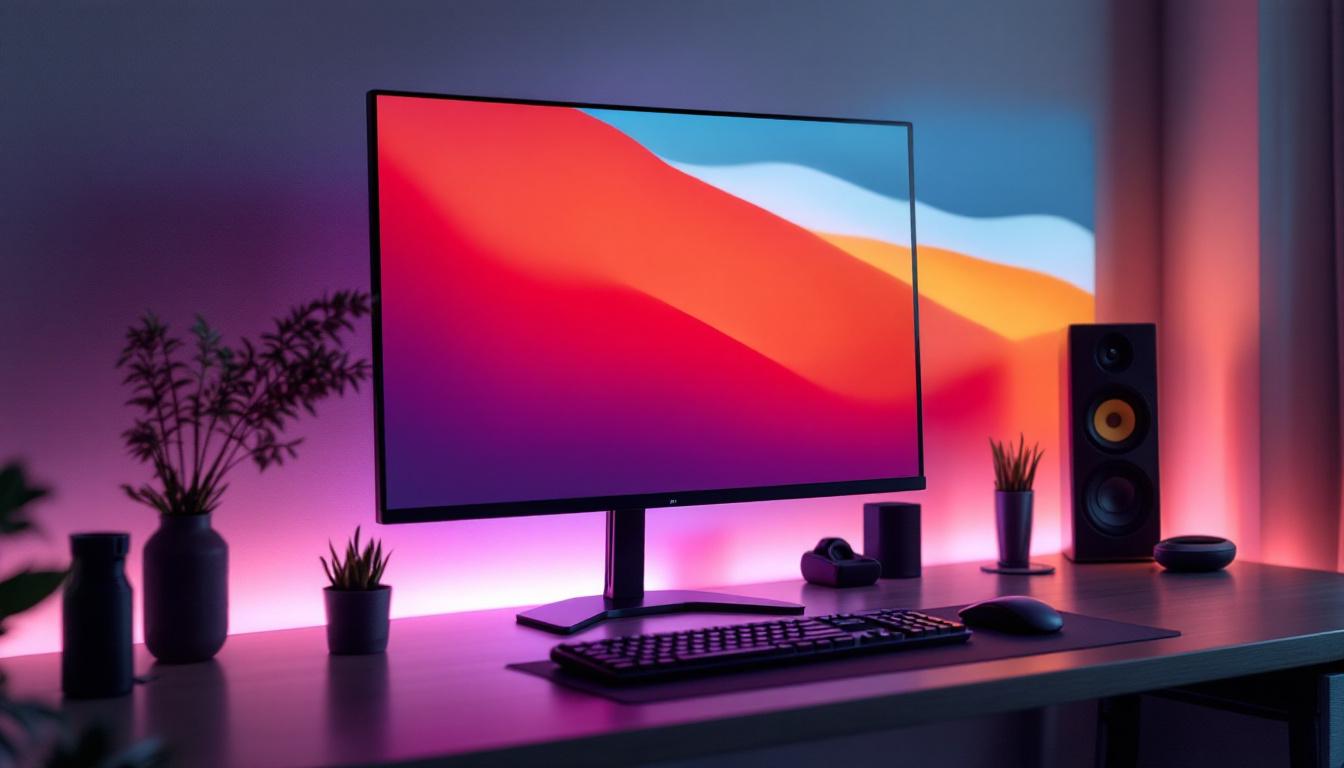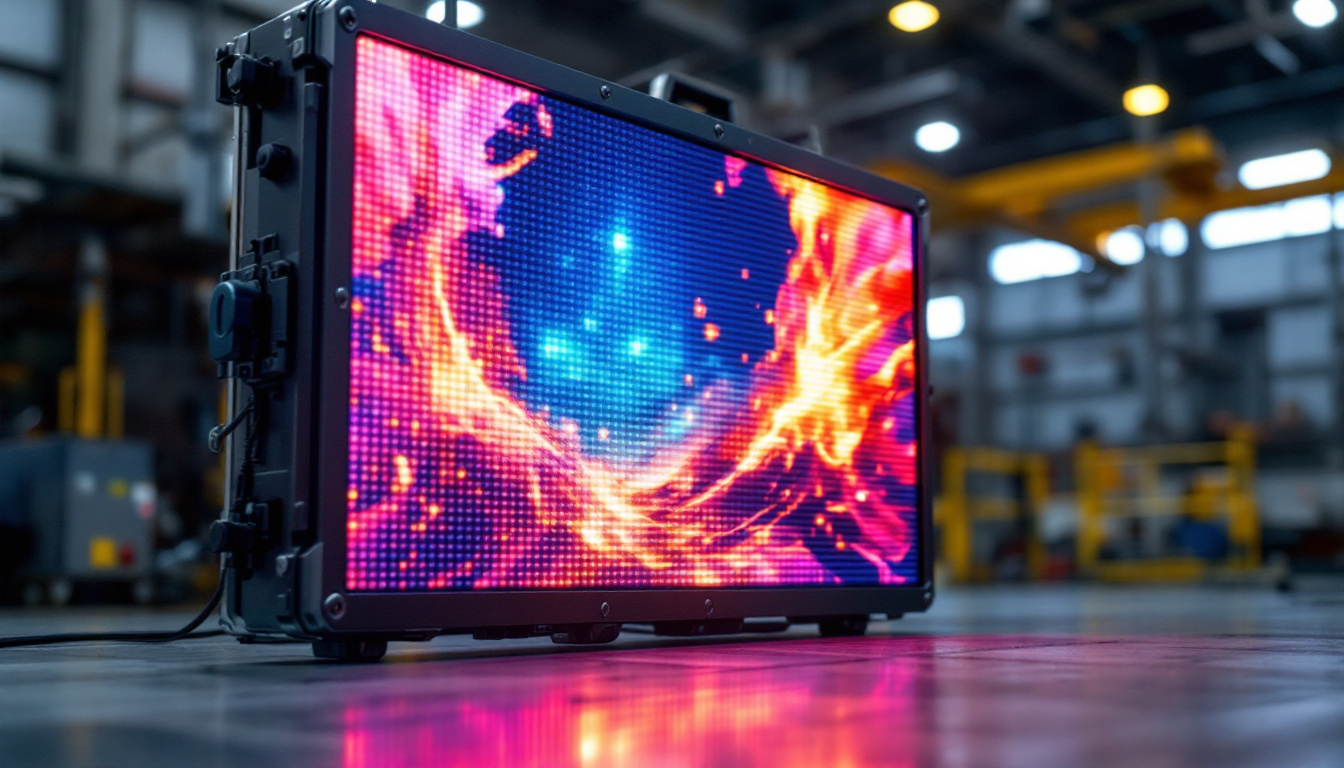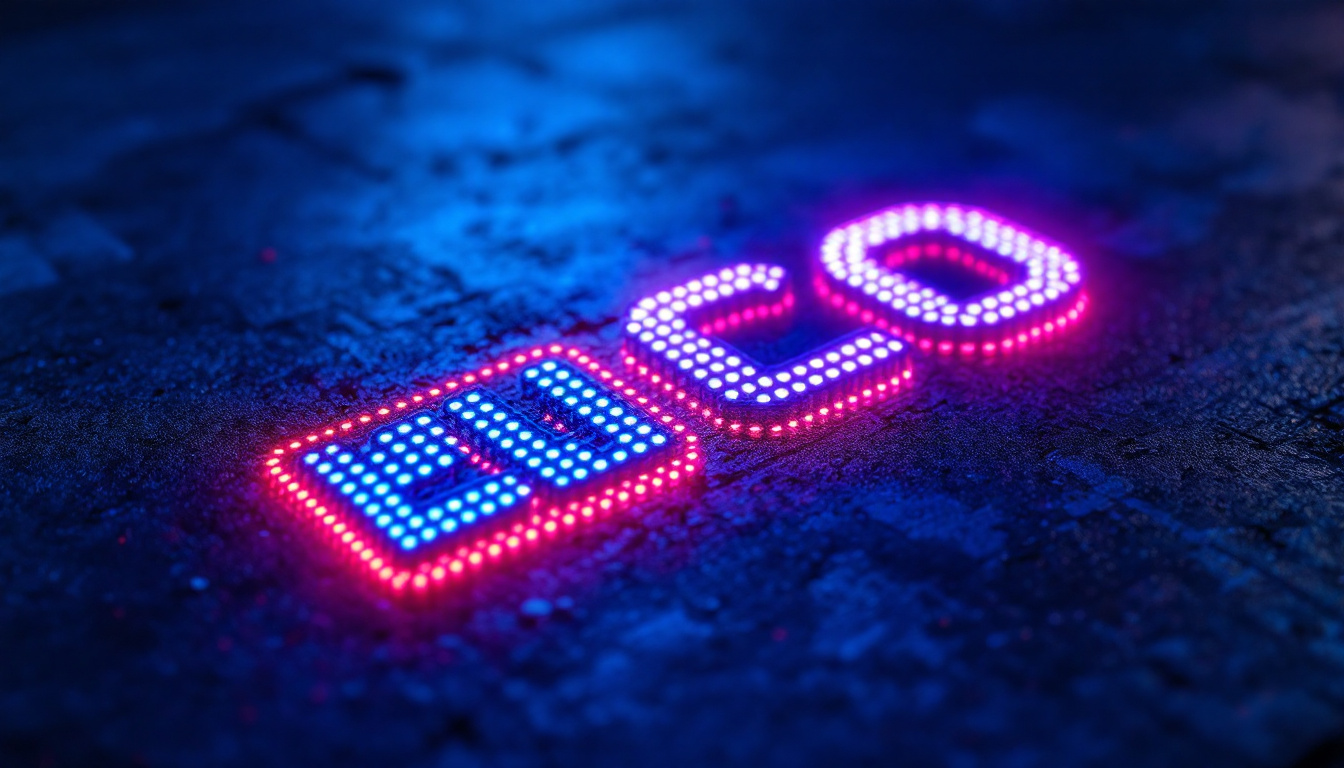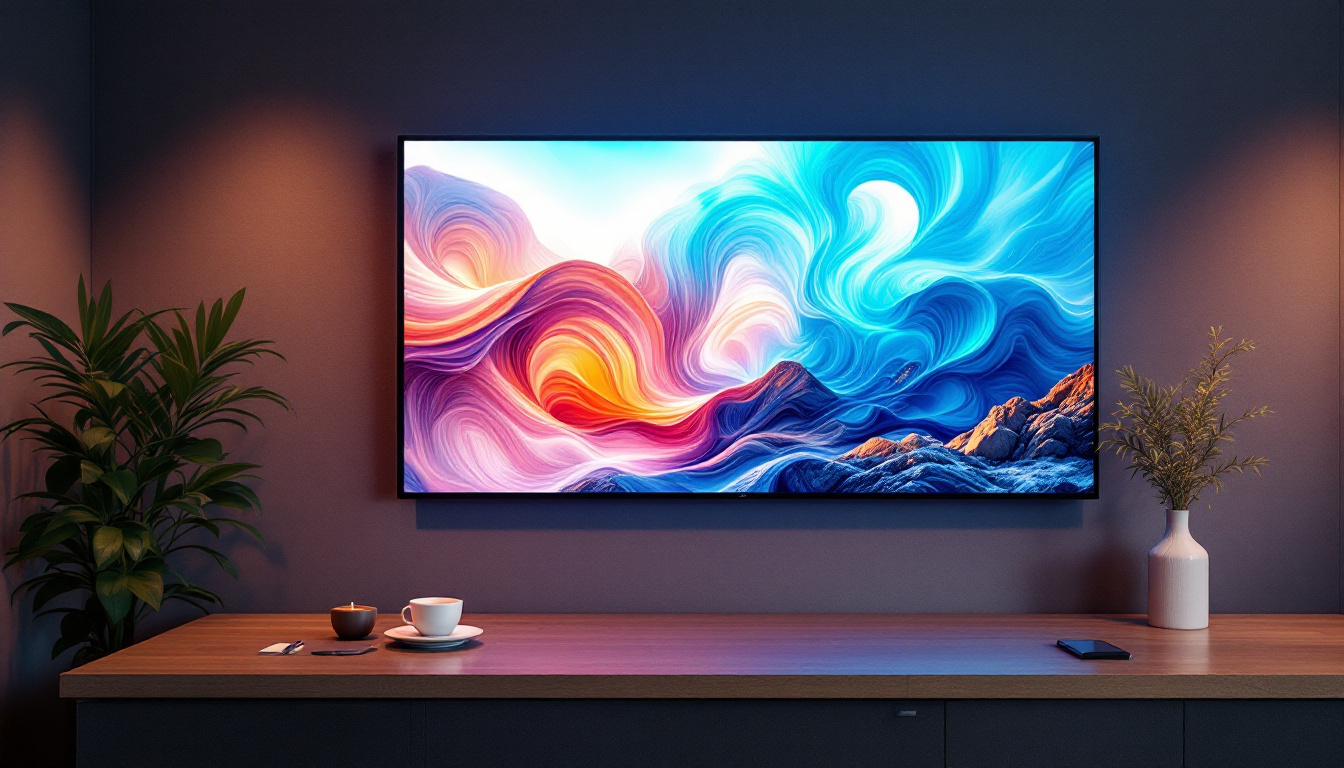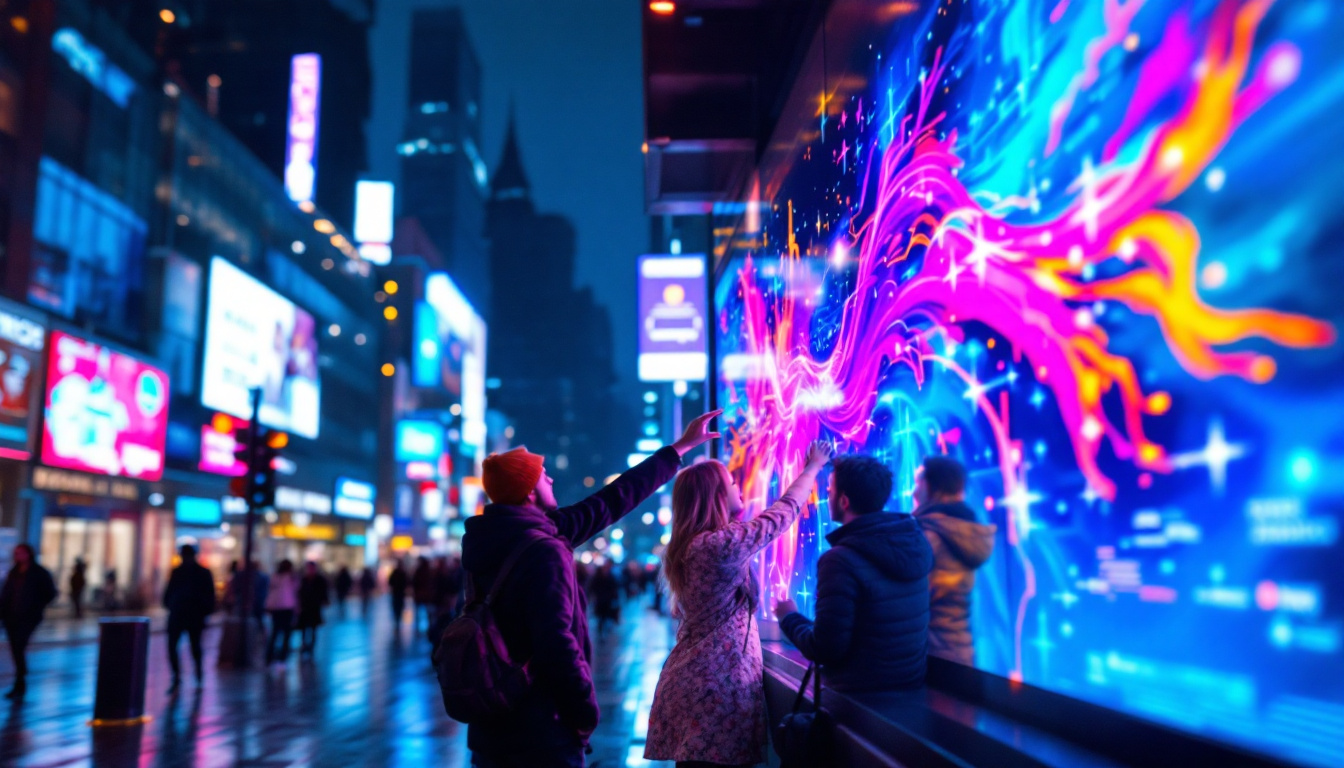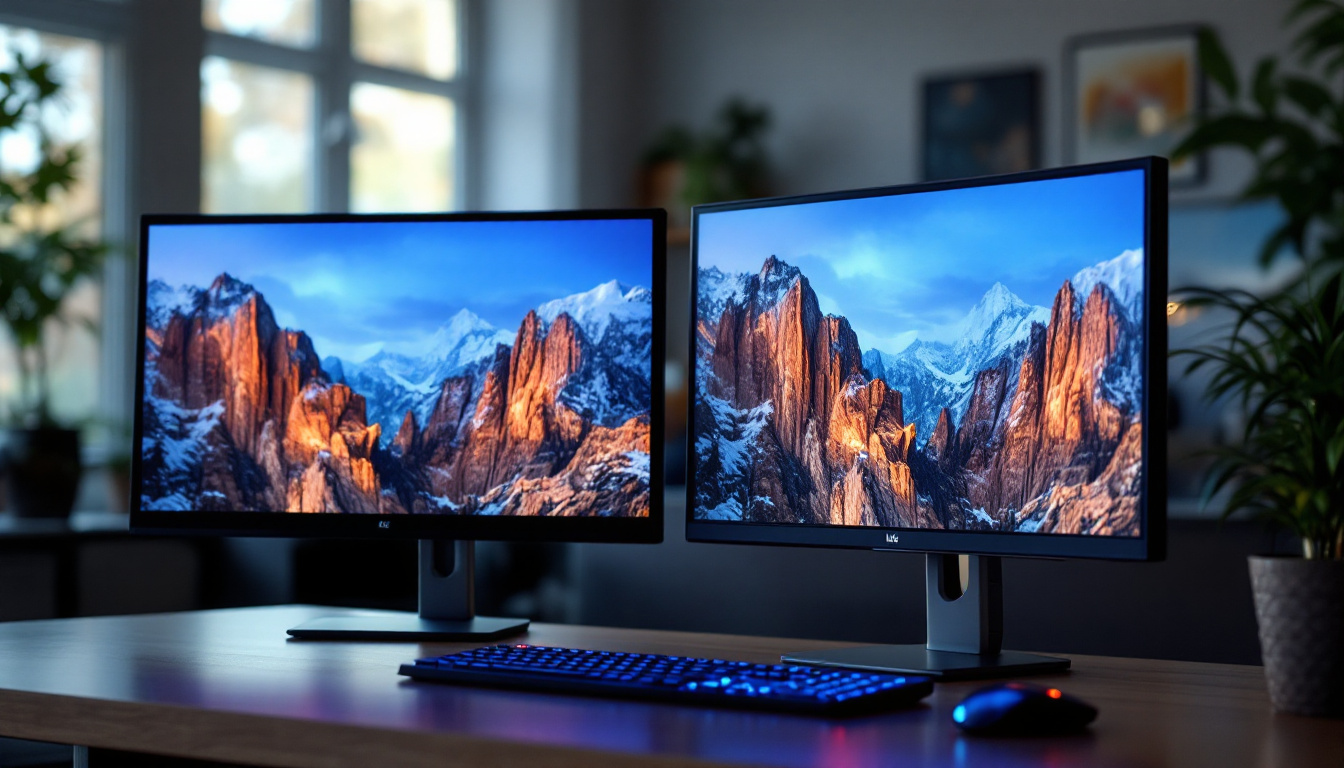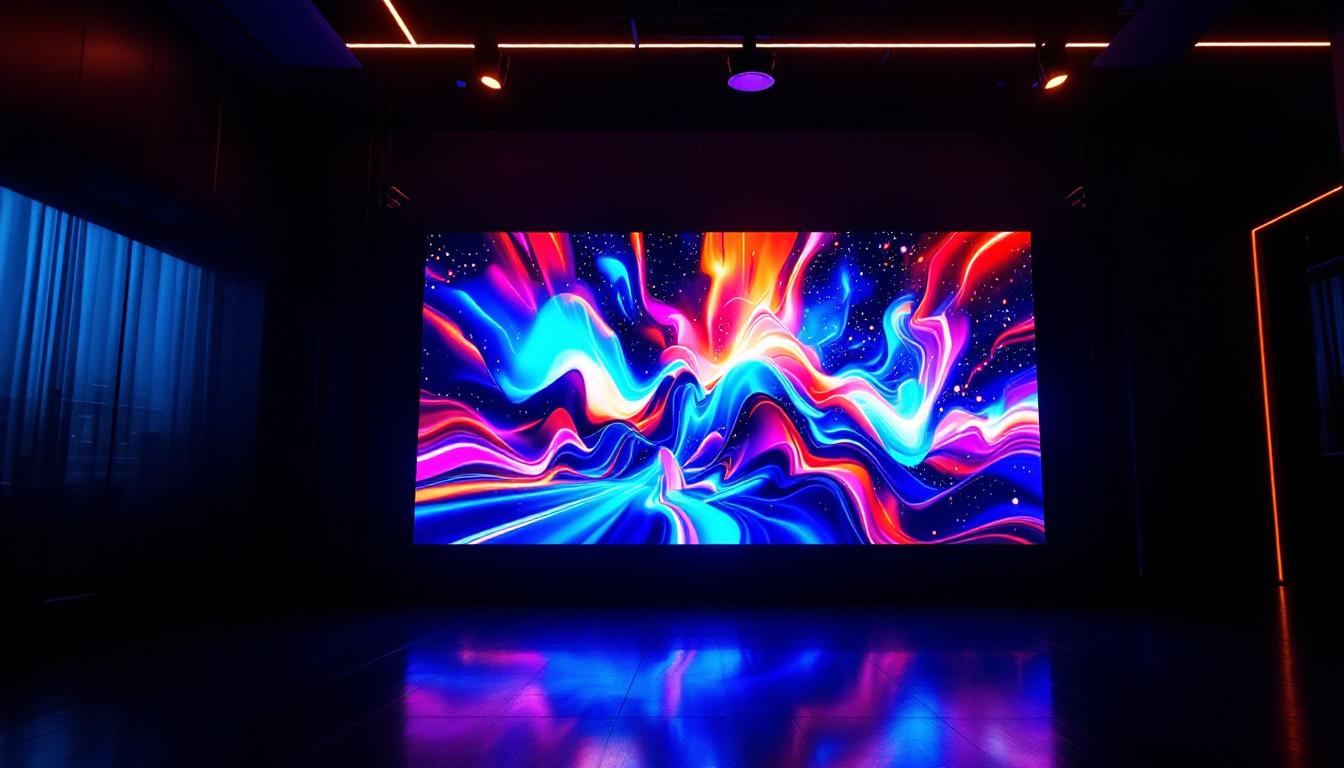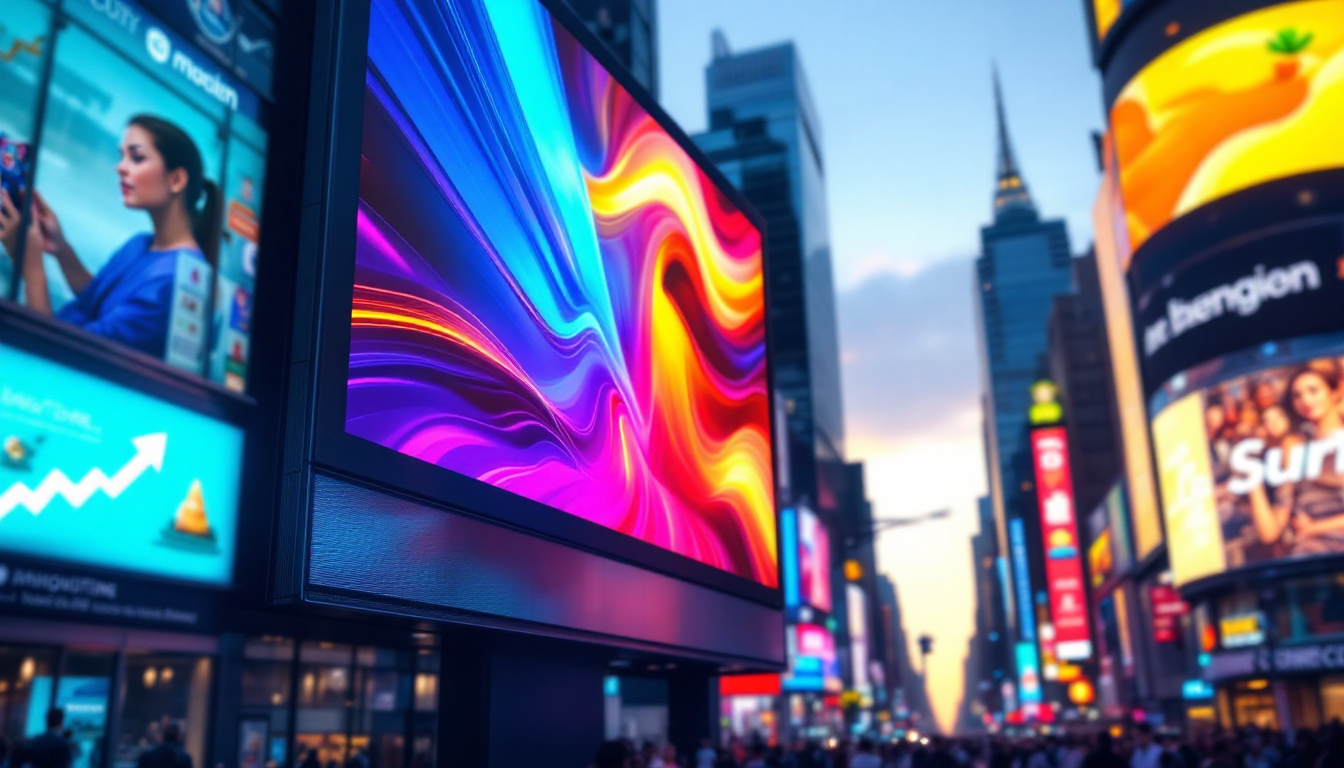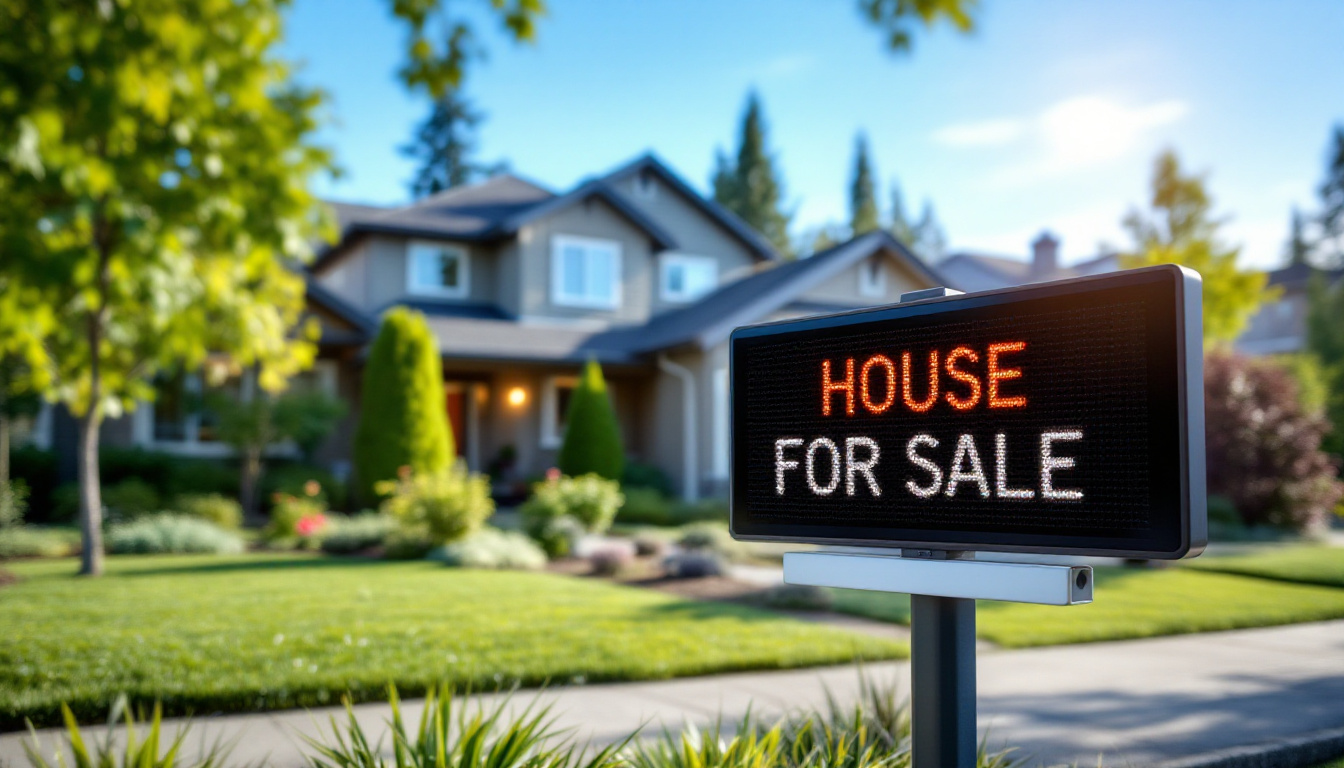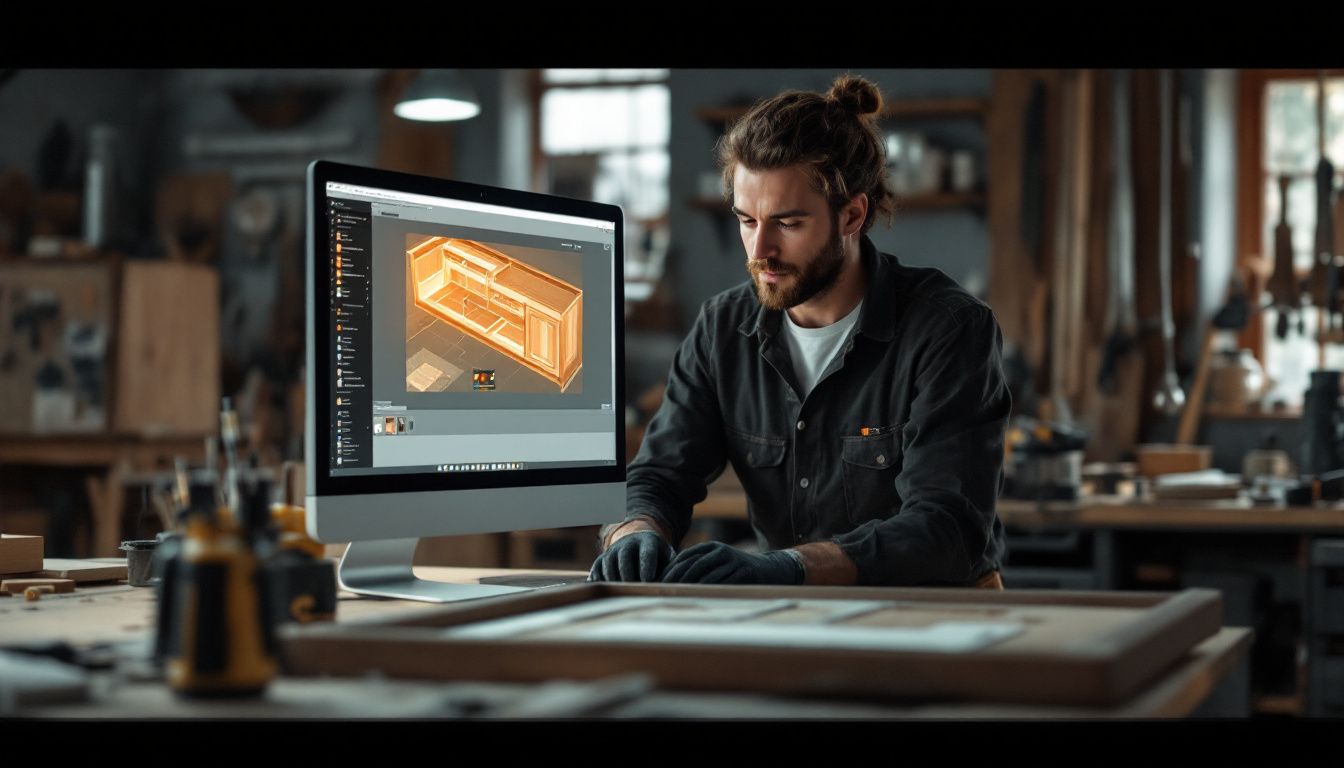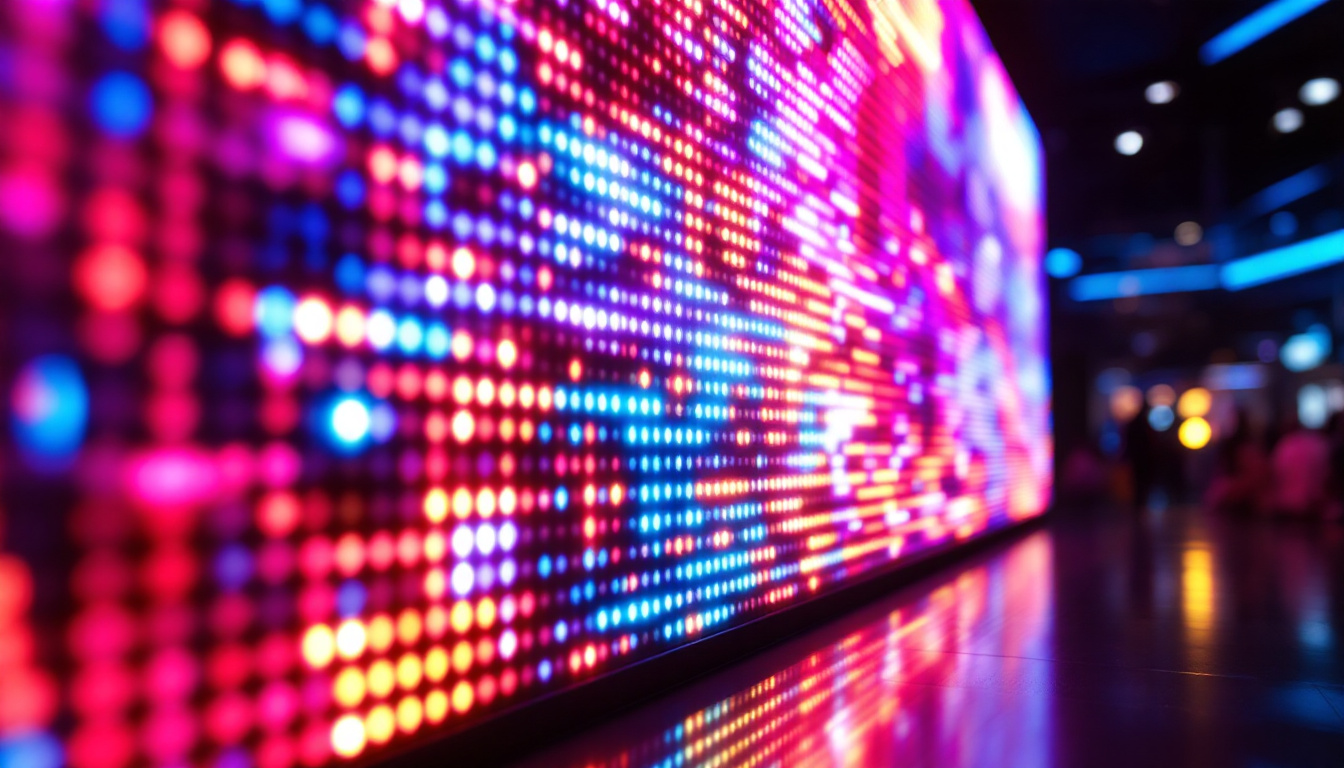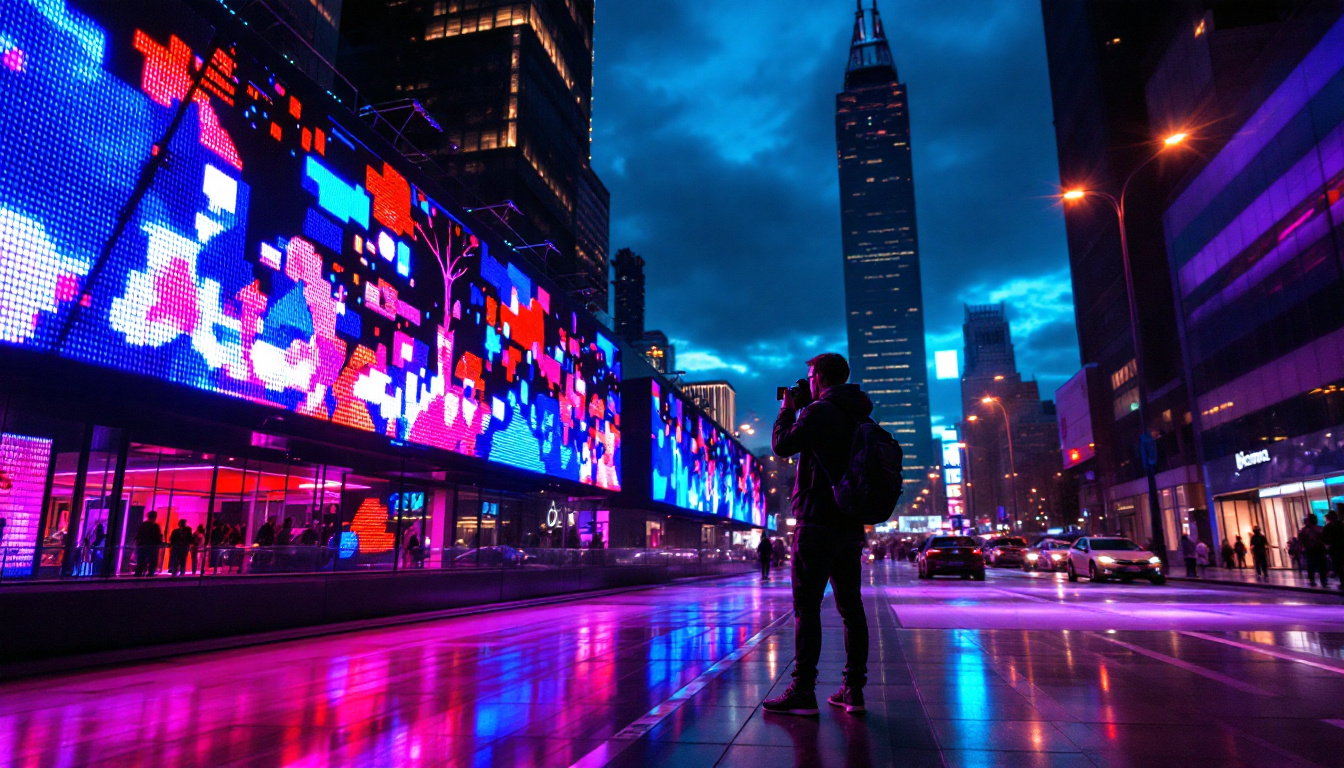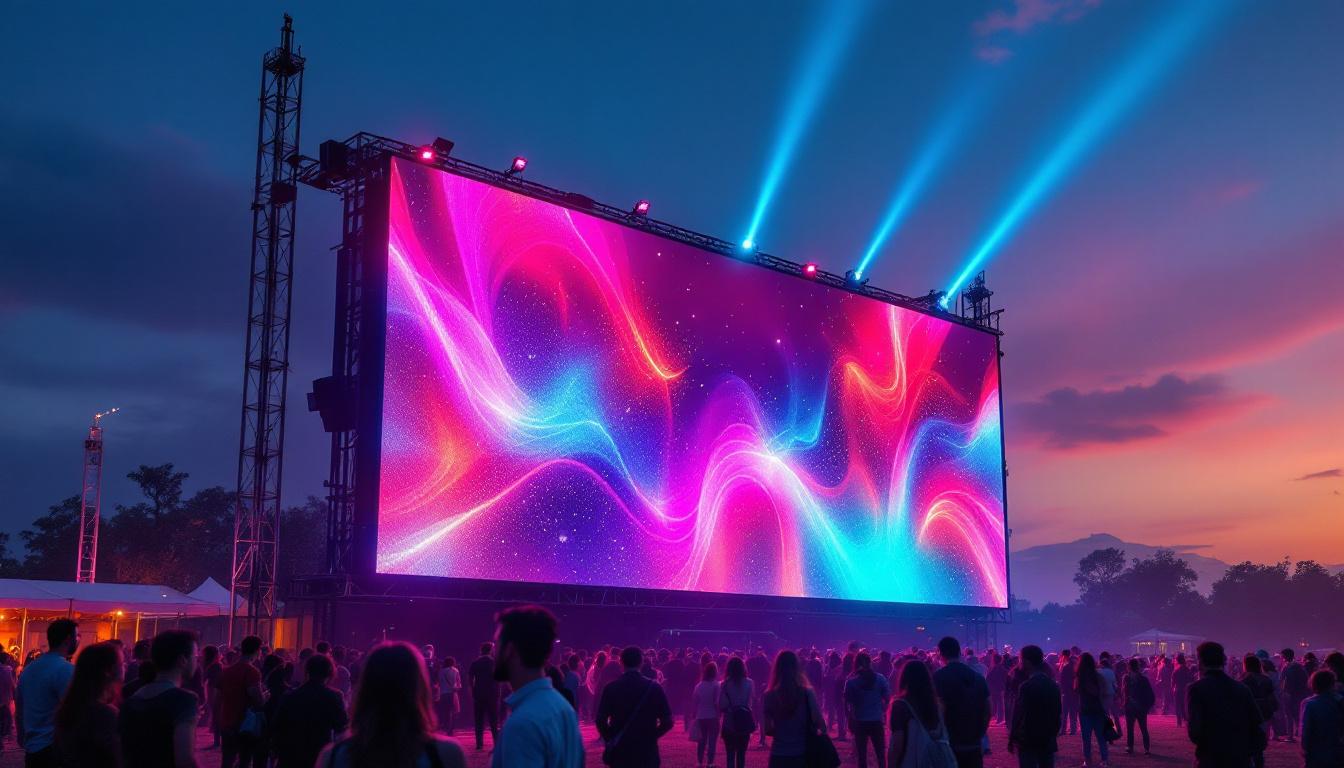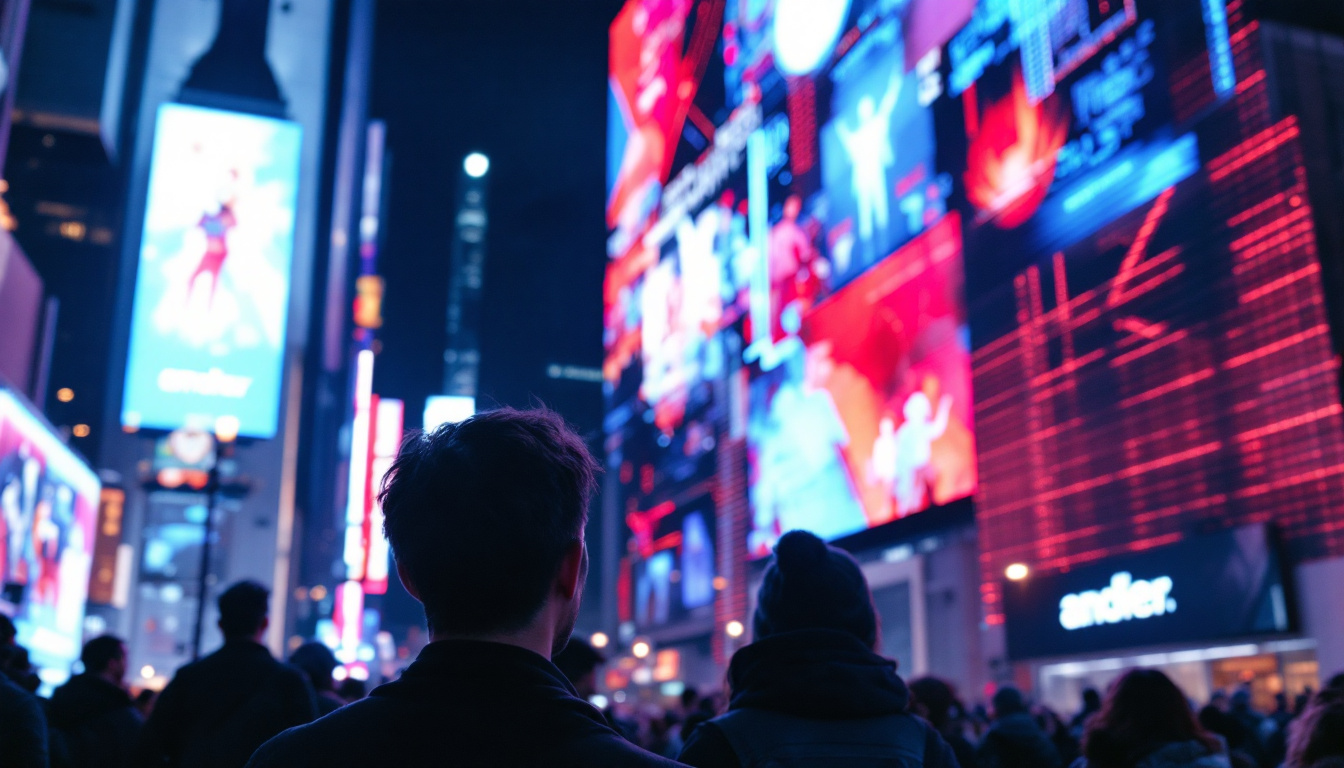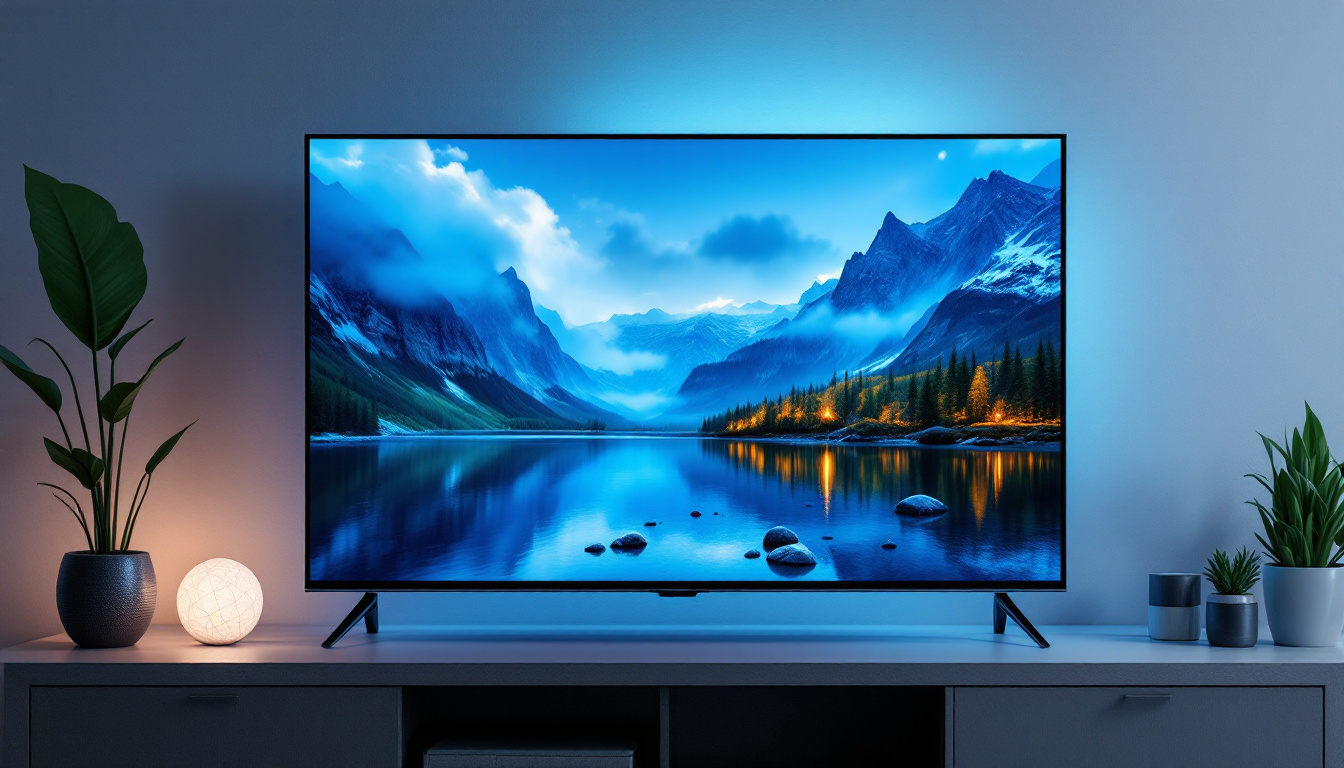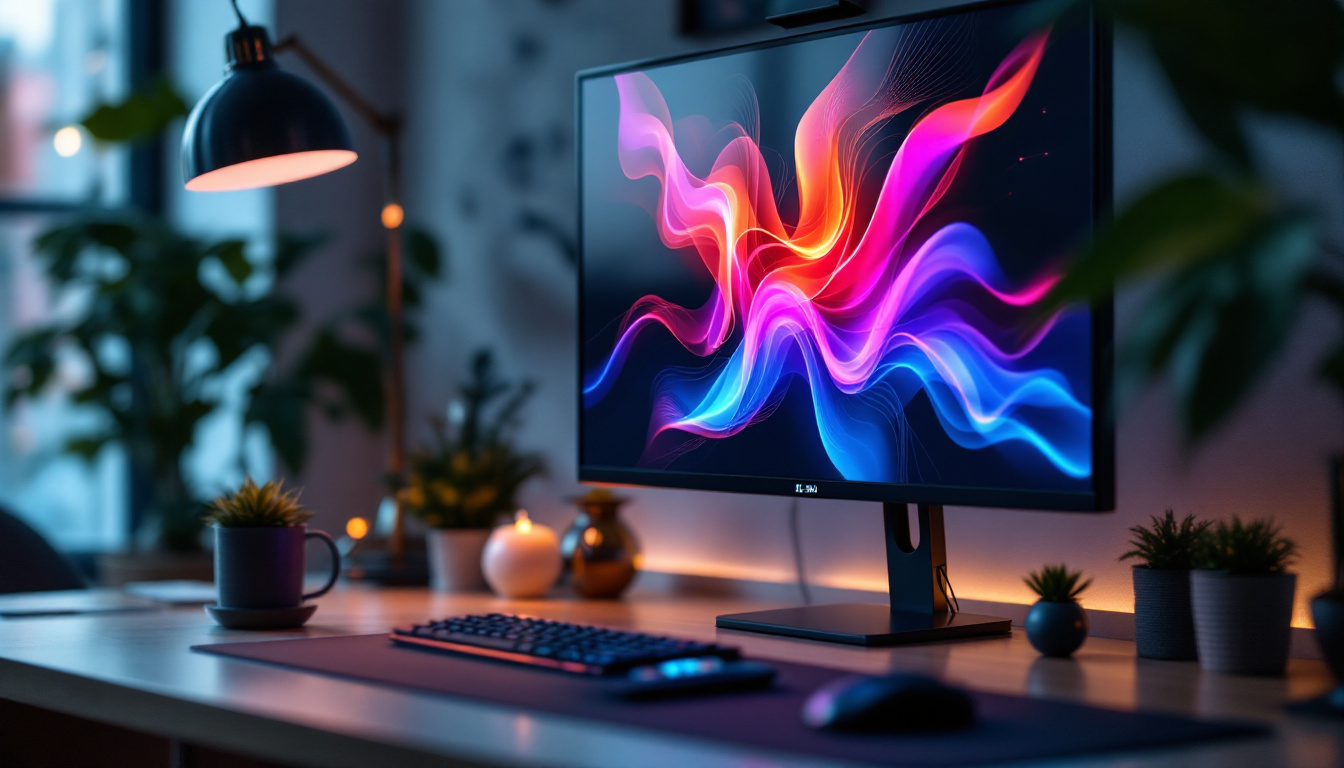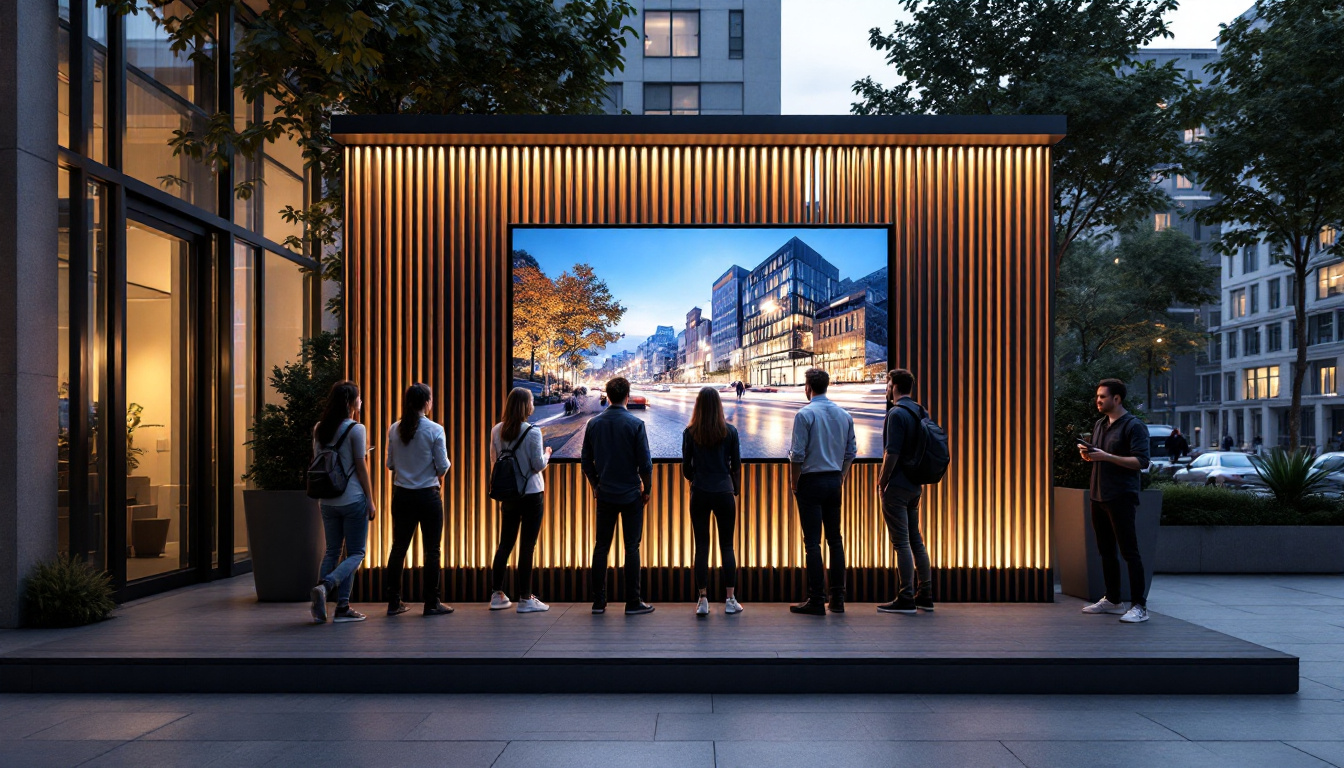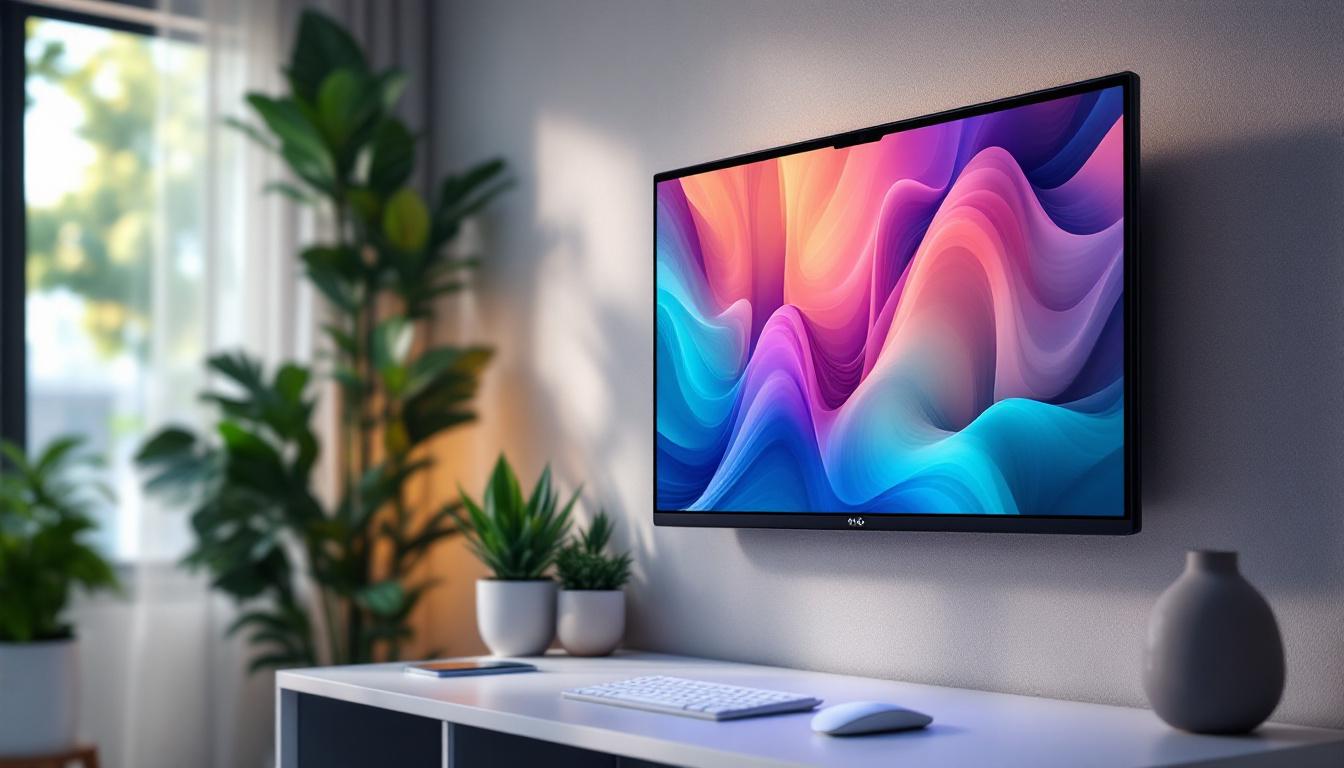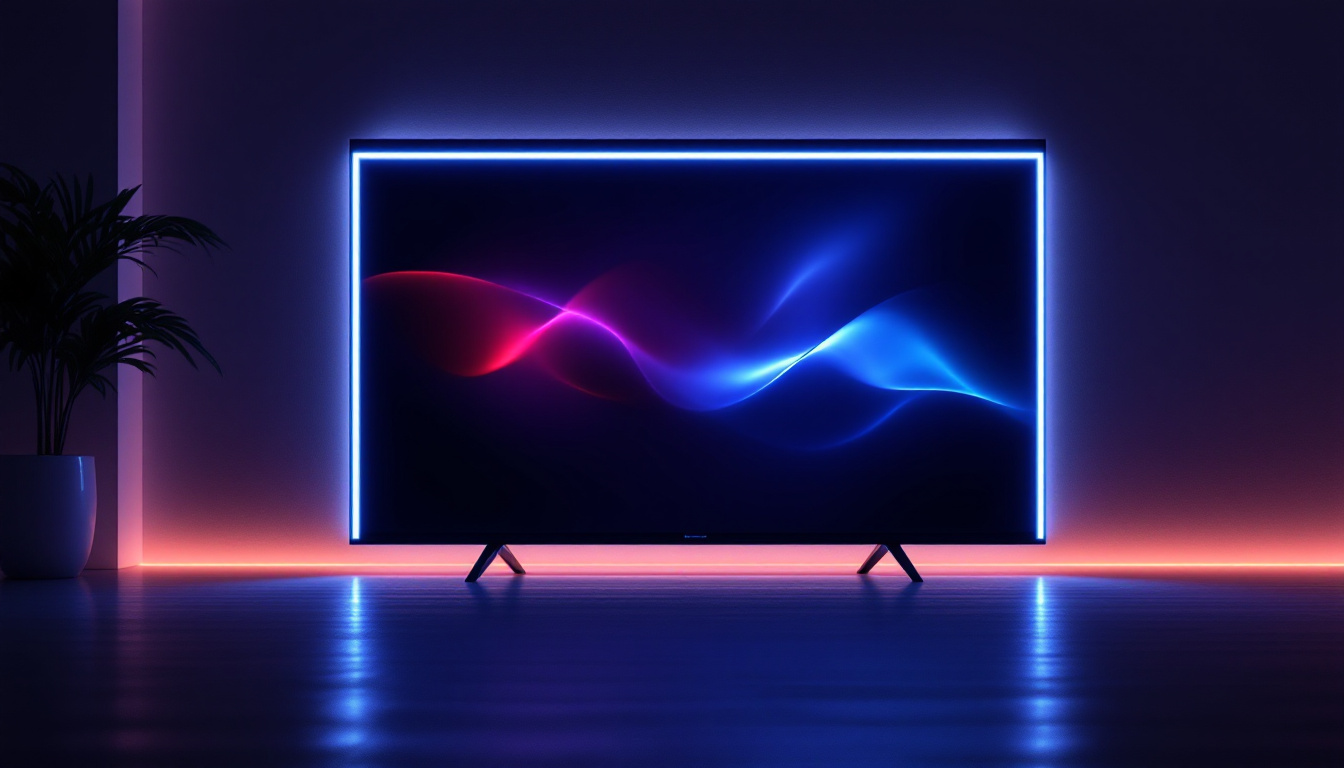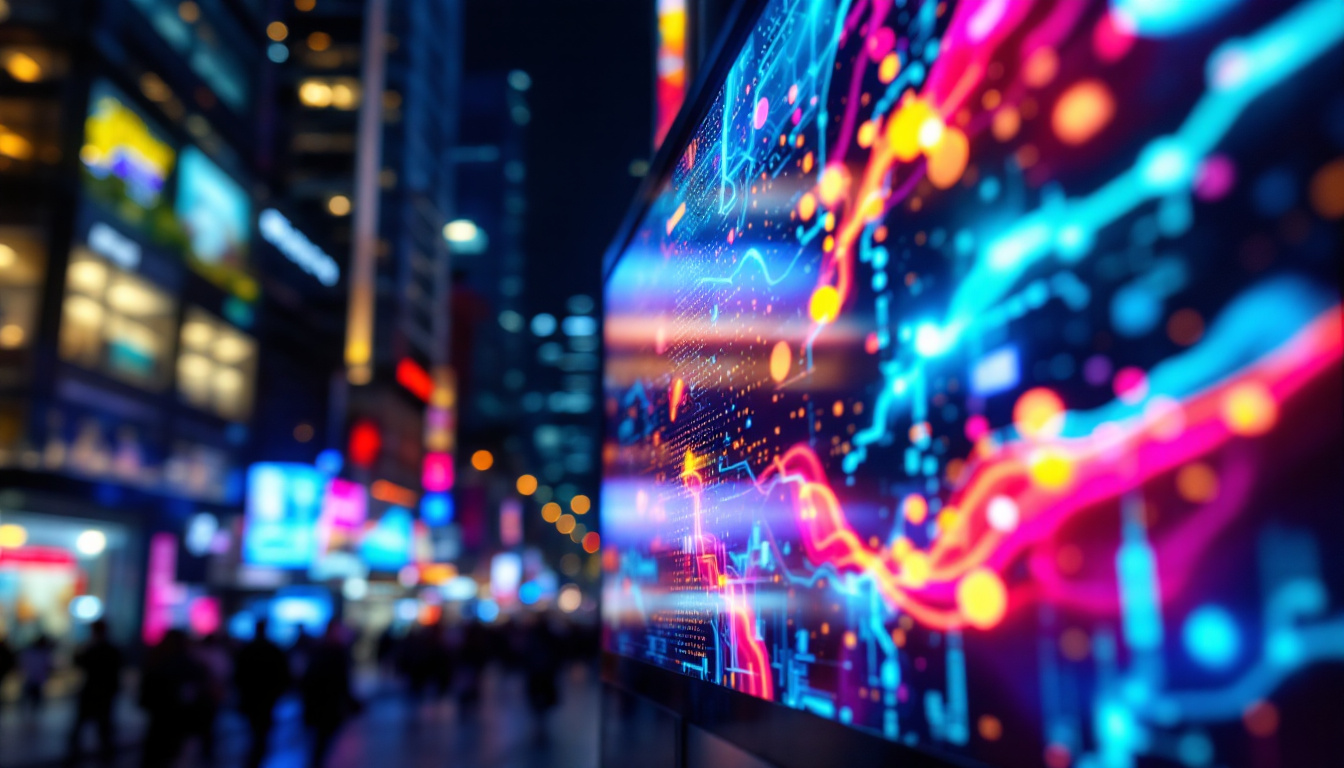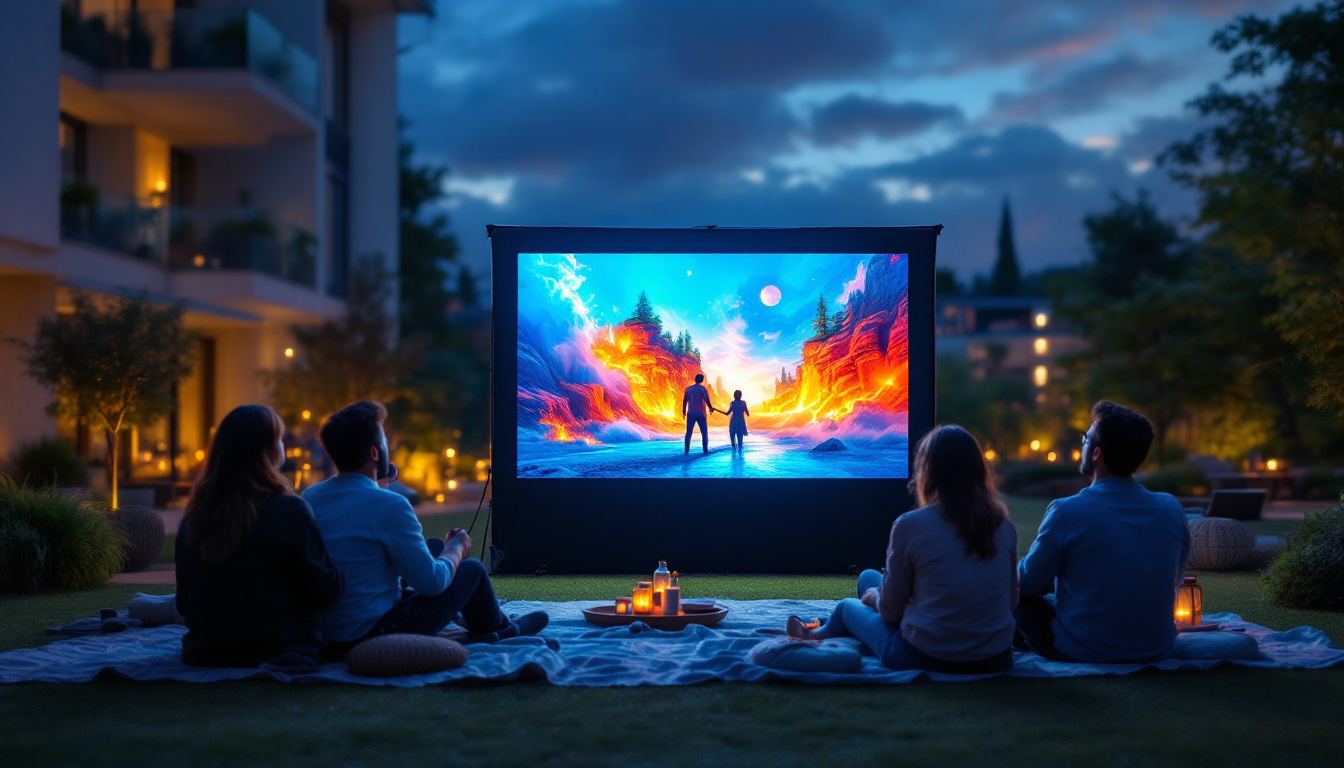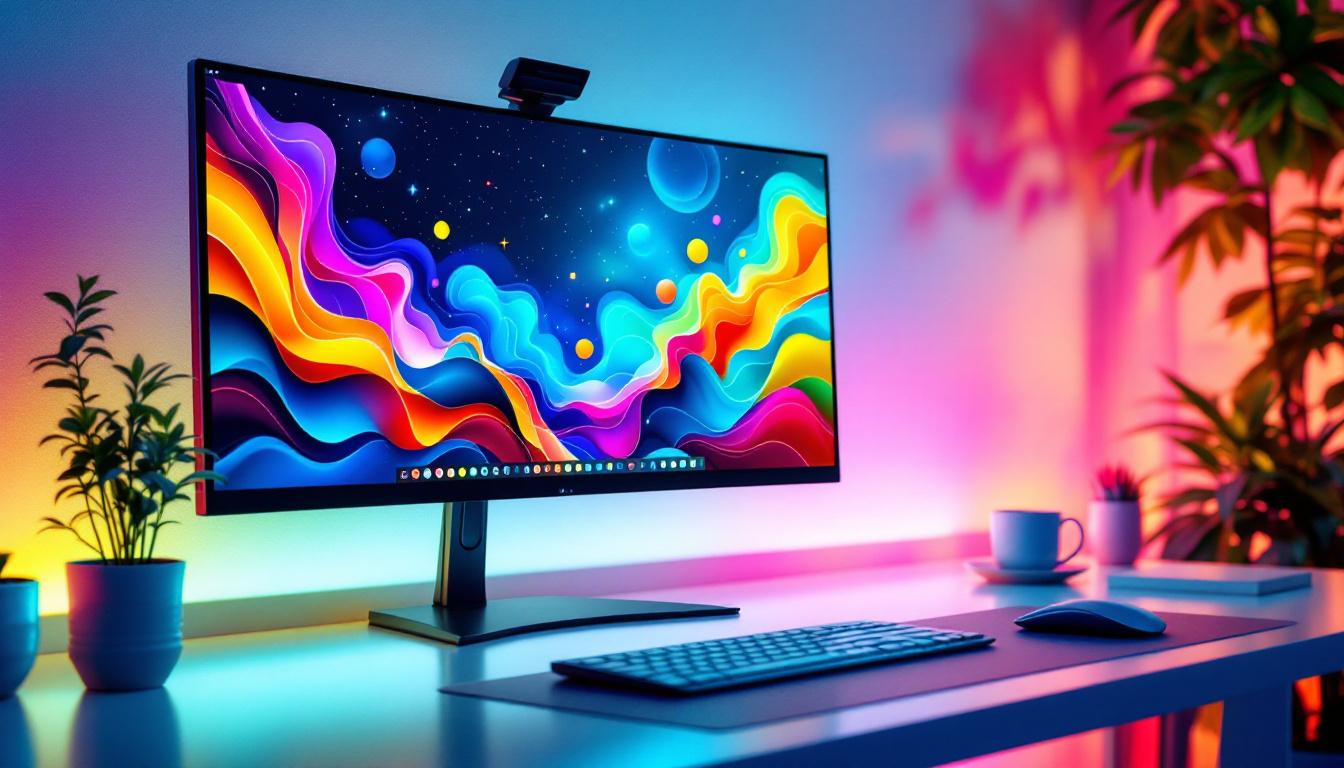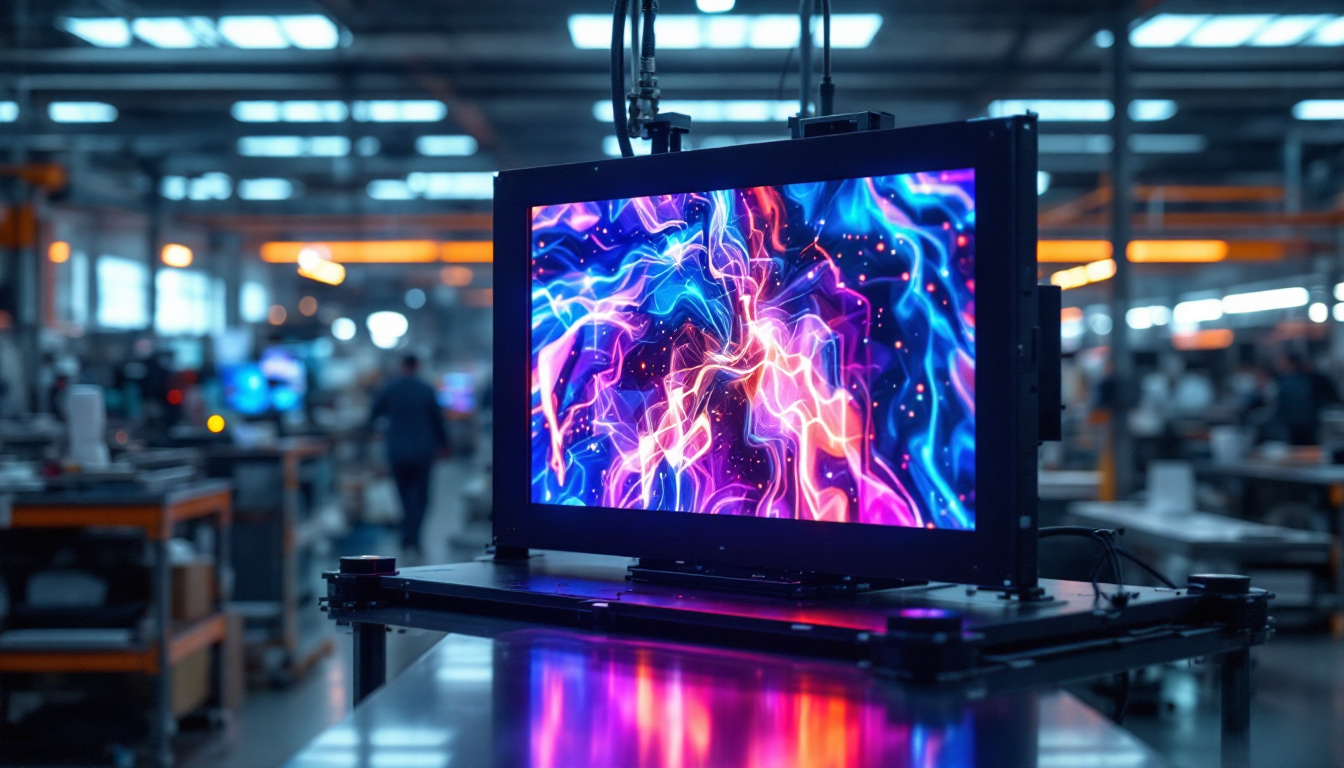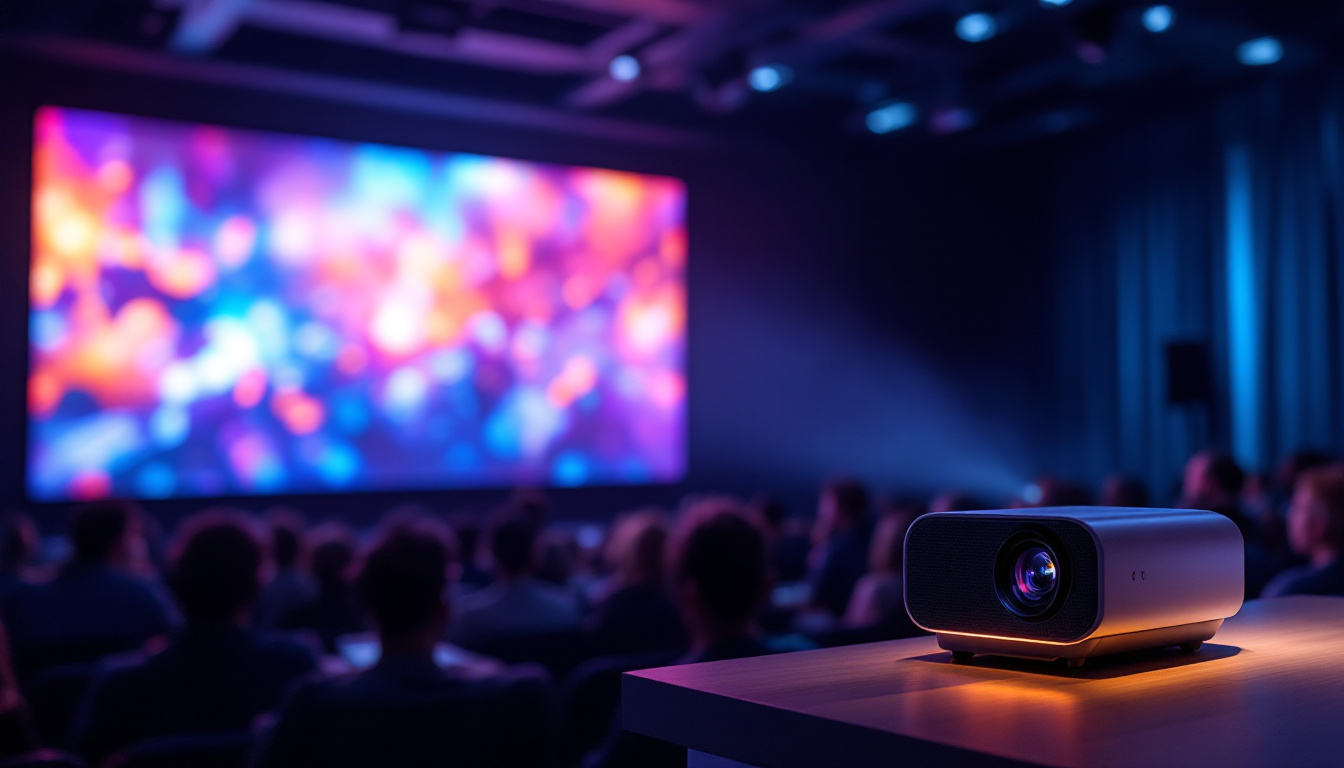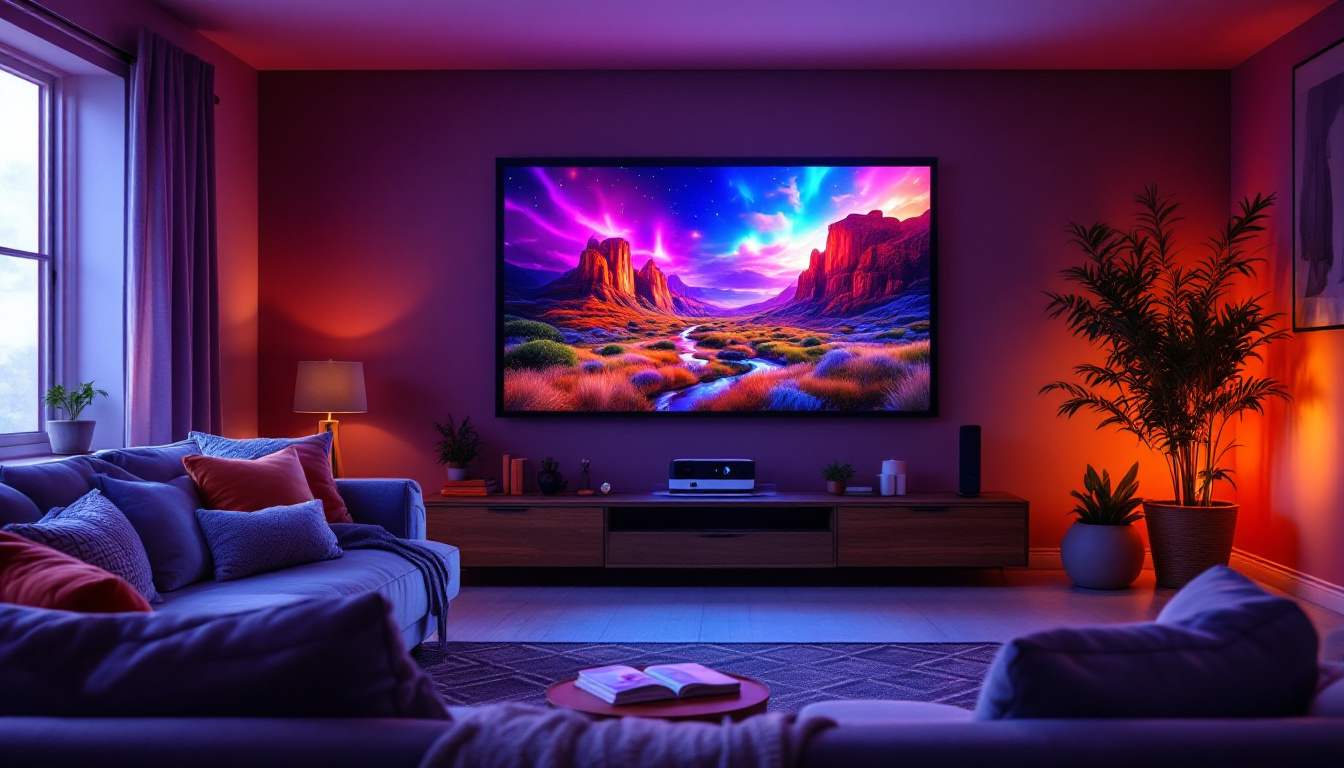In recent years, the demand for high-quality visual displays has surged, leading to innovations in projection technology. Among these advancements, LED projectors have emerged as a popular choice for both personal and professional use. This article delves into the intricacies of LED projectors, exploring their functionality, advantages, and the role of LED projector apps in enhancing user experience.
Understanding LED Projection Technology
LED projectors utilize light-emitting diodes (LEDs) as their primary light source, offering a range of benefits over traditional projection methods. The technology is not only energy-efficient but also provides vibrant colors and a longer lifespan. As the demand for high-quality visual displays continues to grow, LED projectors have emerged as a popular choice for both personal and professional use, revolutionizing the way we experience multimedia content.
How LED Projectors Work
At the core of an LED projector is the light source, which is composed of multiple LEDs that emit light in various colors. These colors are combined to create a full spectrum of light, which is then projected onto a screen. Unlike traditional projectors that use lamps, LED projectors can achieve brighter images with less power consumption. This efficiency is particularly beneficial in settings where extended use is required, such as classrooms or conference rooms, where the need for consistent, high-quality visuals is paramount.
The process begins with the LEDs generating light, which is directed through a series of optical components, including lenses and mirrors. These components help focus and manipulate the light, ensuring that the projected image is sharp and clear. Additionally, many LED projectors use DLP (Digital Light Processing) or LCD (Liquid Crystal Display) technology to enhance image quality further. DLP projectors, for instance, utilize micro-mirrors to create images, offering excellent contrast ratios and fast refresh rates, while LCD projectors provide vibrant color reproduction, making them suitable for a variety of viewing environments.
Advantages of LED Projectors
One of the most significant advantages of LED projectors is their longevity. LED light sources can last up to 30,000 hours, significantly outpacing traditional bulbs that typically last around 2,000 to 5,000 hours. This longevity translates into reduced maintenance costs and less frequent replacements. Furthermore, the durability of LED technology means that these projectors are less susceptible to damage from shock or vibration, making them ideal for mobile applications or environments where they may be moved frequently.
Moreover, LED projectors are known for their energy efficiency. They consume less power while delivering bright and vivid images, making them an environmentally friendly option. The compact size of LED projectors also allows for greater portability, making them ideal for on-the-go presentations or home entertainment setups. Many models are designed with built-in batteries, enabling wireless operation without the need for an external power source. This feature is particularly advantageous for outdoor movie nights or business presentations in locations without easy access to power outlets. Additionally, the low heat output of LED projectors means they run cooler than their traditional counterparts, further enhancing their usability and comfort during extended viewing sessions.
The Role of LED Projector Apps
With the rise of smart technology, LED projector apps have become an integral part of the user experience. These applications enhance the functionality of LED projectors, allowing users to control settings, stream content, and even create presentations directly from their devices.
Features of LED Projector Apps
LED projector apps come equipped with a variety of features designed to improve usability. One of the most common functionalities is remote control, enabling users to adjust settings such as brightness, contrast, and focus from their smartphones or tablets. This convenience eliminates the need for physical remotes, streamlining the user experience.
Additionally, many of these apps support wireless streaming, allowing users to project content directly from their devices without the need for cables. This feature is particularly useful for presentations, as it enables seamless transitions between slides and multimedia elements.
Popular LED Projector Apps
Several apps have gained popularity among LED projector users, each offering unique features tailored to different needs. For instance, some apps focus on providing a user-friendly interface for adjusting projector settings, while others prioritize content streaming capabilities.
Applications like “Projector Remote” allow users to manage their projectors effortlessly, while “Screen Mirroring” apps enable users to share their device screens wirelessly. These tools enhance the overall projection experience, making it more interactive and engaging.
Choosing the Right LED Projector
When selecting an LED projector, several factors must be considered to ensure it meets specific needs. Understanding the intended use, desired features, and budget will help narrow down the options available in the market.
Key Considerations
First and foremost, the intended use of the projector should guide the decision-making process. For home theater setups, a projector with high resolution and color accuracy is essential. Conversely, for business presentations, portability and ease of connectivity may take precedence.
Another critical factor is brightness, measured in lumens. A projector with higher lumens is better suited for well-lit environments, while lower-lumen projectors can suffice in darker settings. Additionally, consider the projector’s resolution; higher resolutions provide clearer images, which is particularly important for detailed presentations or movie viewing.
Budgeting for Your Purchase
Budget plays a significant role in the selection process. LED projectors are available across a wide price range, from budget-friendly options to high-end models. It’s essential to balance cost with the desired features, ensuring that the chosen projector meets both quality and financial expectations.
Investing in a reputable brand can also provide peace of mind regarding performance and reliability. Researching user reviews and expert opinions can help identify models that offer the best value for money.
Setting Up Your LED Projector
Once the right LED projector is selected, setting it up correctly is crucial for optimal performance. Proper placement, connection, and calibration can significantly enhance the viewing experience.
Placement and Connection
The placement of the projector is vital for achieving the best image quality. Ideally, the projector should be positioned at a distance that allows for a clear and adequately sized image on the screen. Most projectors come with guidelines on optimal throw distance, which should be followed for best results.
Connection options vary by model, but many LED projectors offer HDMI, USB, and wireless connectivity. Ensuring that the projector is connected to the correct source is crucial for seamless operation. For wireless connections, following the app’s instructions for pairing devices will facilitate a smooth setup.
Calibration for Optimal Performance
Calibrating the projector settings can significantly impact image quality. Adjusting brightness, contrast, and color settings according to the environment can enhance the viewing experience. Many LED projectors come with preset modes for different scenarios, such as “Movie,” “Presentation,” or “Game,” which can be utilized to simplify the calibration process.
Additionally, regular maintenance, such as cleaning the lens and ensuring proper ventilation, can prolong the life of the projector and maintain image quality.
Common Applications of LED Projectors
LED projectors are versatile tools that find applications in various settings, from home entertainment to professional environments. Understanding these applications can help users maximize the potential of their devices.
Home Entertainment
For home theater enthusiasts, LED projectors provide an immersive viewing experience that rivals traditional television setups. With the ability to project large images onto screens or walls, users can enjoy movies, sports, and video games in a cinematic format.
Many LED projectors support 4K resolution and HDR (High Dynamic Range), enhancing color accuracy and detail. This capability makes them ideal for movie nights or gaming sessions, where visual quality is paramount.
Business Presentations
In corporate environments, LED projectors are invaluable for presentations and meetings. Their portability allows for easy transport between locations, while wireless connectivity enables quick setup and sharing of content.
Additionally, the bright and clear images produced by LED projectors ensure that presentations are visible to all attendees, regardless of room lighting. This capability is essential for effective communication and engagement during meetings.
Education and Training
Educational institutions have also embraced LED projectors as teaching aids. In classrooms, these projectors facilitate interactive learning experiences by allowing teachers to display multimedia content, including videos, slideshows, and educational software.
Moreover, in training sessions, LED projectors can enhance presentations, making complex information more accessible and engaging for participants. The ability to project large images ensures that all attendees can see the material clearly, promoting better understanding and retention.
Future Trends in LED Projection Technology
The future of LED projection technology is promising, with ongoing research and development aimed at enhancing performance and expanding capabilities. Innovations in this field are expected to revolutionize the way users interact with projection systems.
Advancements in Resolution and Brightness
As technology continues to evolve, advancements in resolution and brightness are anticipated. Future LED projectors may offer even higher resolutions, such as 8K, providing unparalleled image clarity. Additionally, improvements in brightness will enable effective use in a broader range of lighting conditions, making projectors more versatile than ever.
Integration with Smart Technology
Integration with smart technology is another trend that is likely to shape the future of LED projectors. As smart homes become more prevalent, projectors that can seamlessly connect with other devices will enhance user experience. Voice control, app integration, and compatibility with smart assistants will make operating projectors more intuitive and efficient.
Conclusion
LED projectors have transformed the way users experience visual content, offering vibrant images, energy efficiency, and longevity. The integration of LED projector apps further enhances usability, making it easier for users to control settings and stream content. When selecting an LED projector, understanding the intended use, key features, and budget is crucial for making an informed decision.
As technology continues to advance, the future of LED projection promises exciting developments that will further improve performance and user experience. Whether for home entertainment, business presentations, or educational purposes, LED projectors are set to remain a valuable tool in the realm of visual displays.
Discover LumenMatrix’s Innovative LED Display Solutions
Ready to elevate your visual experience with the latest in LED display technology? Look no further than LumenMatrix, a pioneer in creating dynamic and immersive LED displays for every occasion. From the comfort of your home to the buzz of a sports arena, our extensive range of LED solutions—including Indoor and Outdoor LED Wall Displays, Vehicle LED Displays, LED Poster Displays, and more—ensures that your message stands out with brilliance and clarity. Embrace the future of visual communication and check out LumenMatrix LED Display Solutions today to see how we can transform your space into a captivating visual journey.

